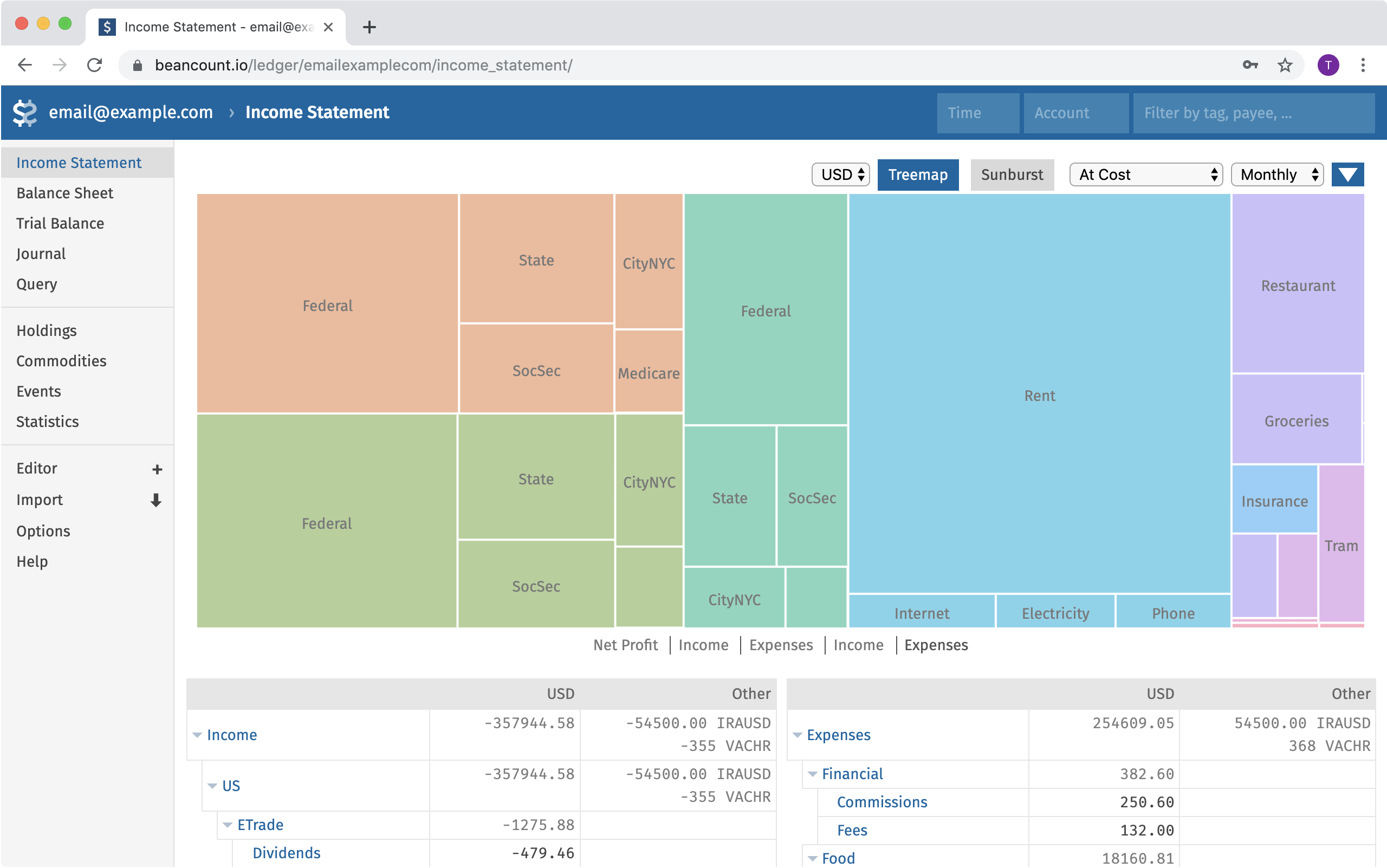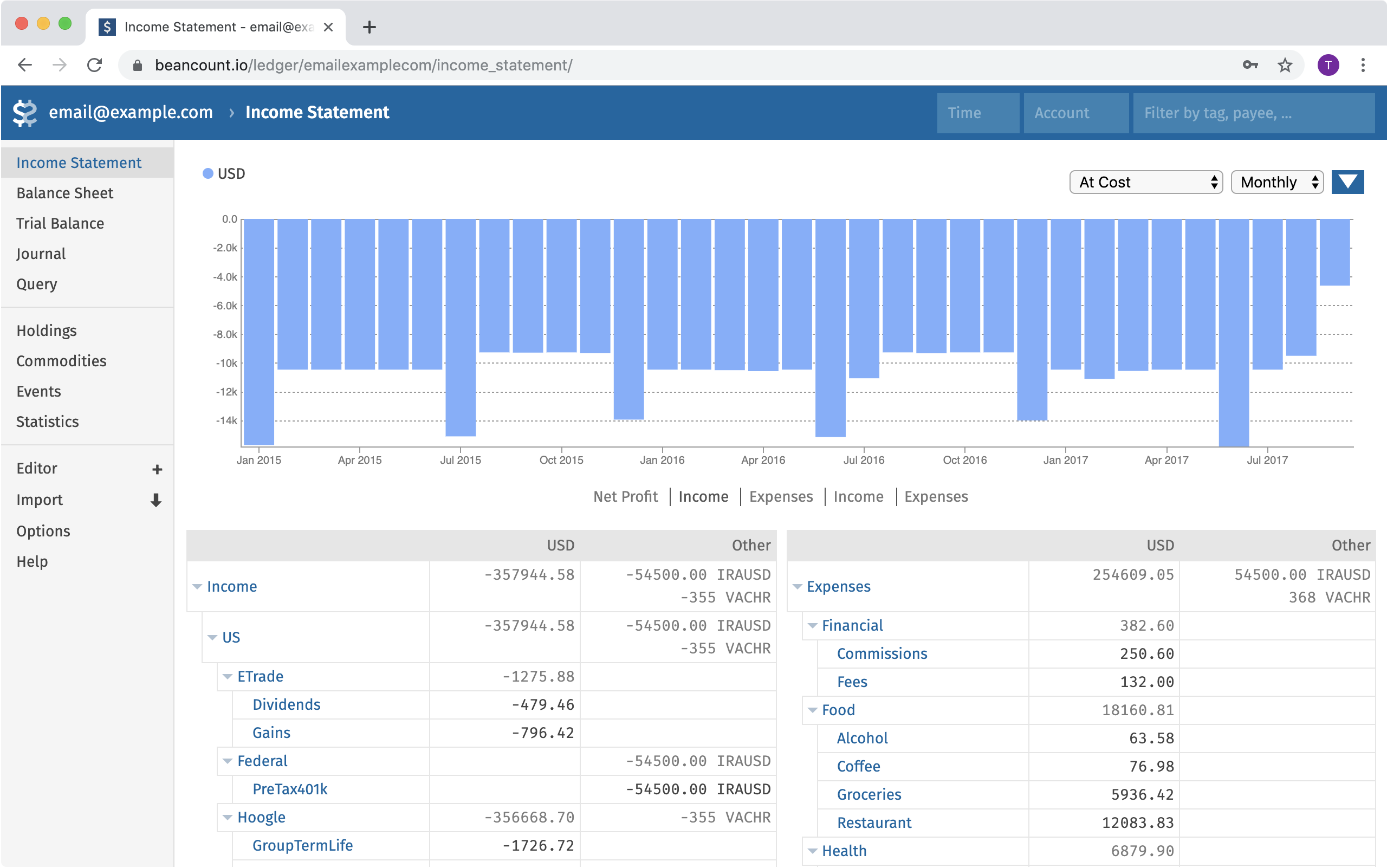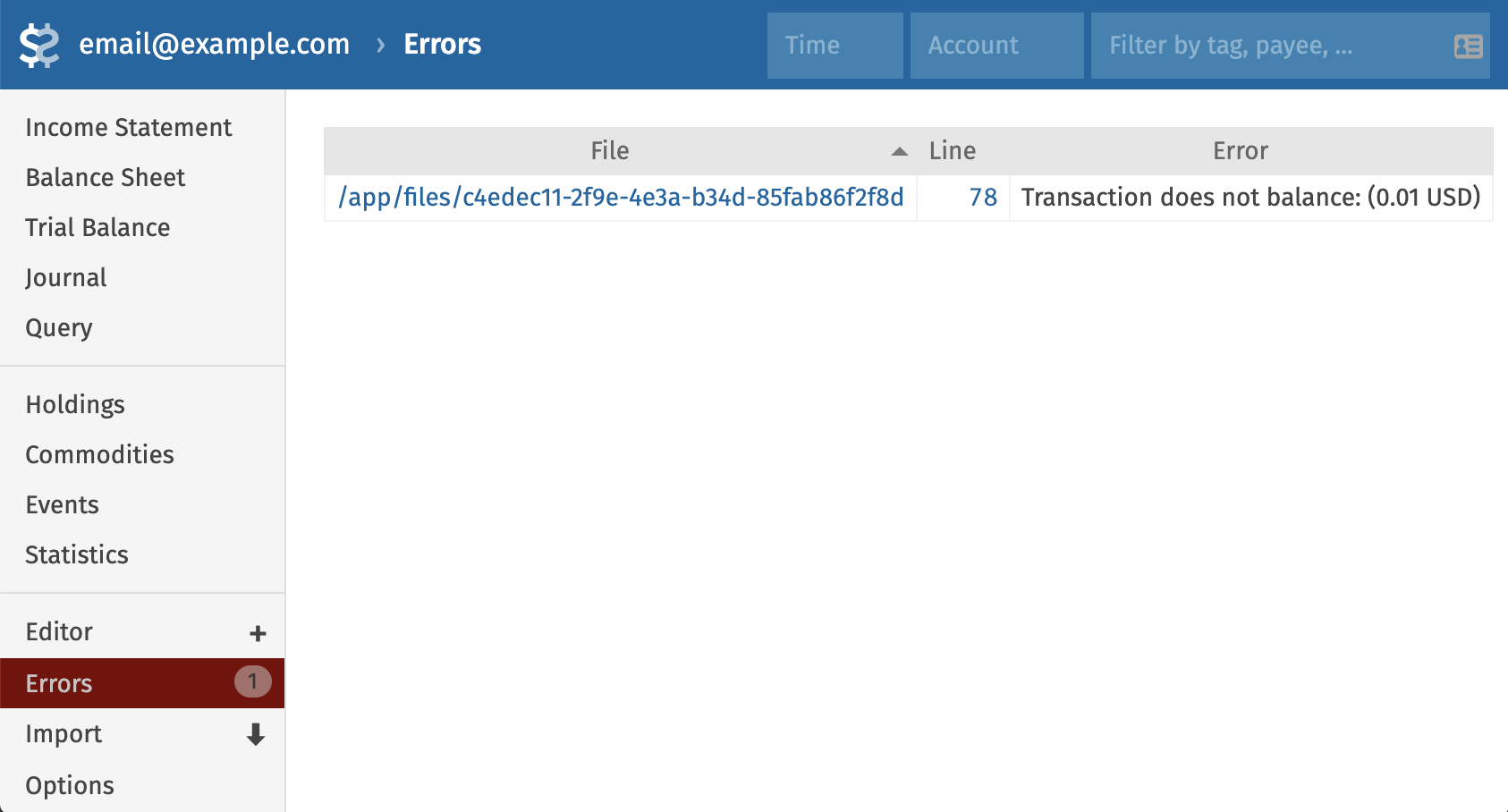Introduction to Beancount.io
Why bookkeeping?
Everyone has advice about how to manage money. Search Google for "manage money," and you'll get back over 1,690,000,000 links. You'll find tons of life-hacking or self-help articles and books. You'll find professional coaches or courses witch will coach you for a fee. You'll find financial and investment services. Feel free to try what appeals to you and grow your assets through trials and errors.
I think the most important thing to remember is that asking the question of money comes from fear and self-doubt. We all fear change. We all doubt our ability to make more money.
Instead of spending time worrying and doubting, focusing the opposite — your confidence. If you are playing poker and with few chips, you can only make small bets and only win a small amount of money. When you have a lot of chips, you can make big bets and win big. You have more room for taking risks. You can try things which you cannot try when you have fewer chips.
Here is the magic - by understanding more of your financial status, you gain confidence! With more confidence, we can make better judgment and would like to bet the best amount for more significant success, and then win more.

Know your expenses and plan for next spending
Where is the end of the wining-more concern? People often talk about the buzzword of financial freedom. However, talk is cheap, but bookkeeping precisely answers the question.
Four main financial statements for the overview of financial status
Unfortunately, bookkeeping is not easy in our modern life. We are in a new age of abundance. We have a lot of accounts - cash, bank accounts, payment apps, credit cards, stock or crypto broker accounts, discount cards, … We have assets like houses, cars, gold, jewelry, … To make things even worse, some of us may live across countries and have to deal with different currencies. How could we draw an accurate map of our financial life and navigate through the future uncertainties?
By "accurate map of our financial life," I mean these four primary financial statements:
- Income Statement: It shows how much revenue we earned over a specific period. This statement is usually considered the most important of the financial statements because it reflects the operating results.
- Balance Sheets: It answers how much assets, liabilities, and equity of the entity we have. This statement is the second most important because it reports the liquidity and capitalization of our assets.
- Cash Flow Statements: It reports our inflows and outflows of cash and answers whether we generated cash. We need enough cash on hand to pay expenses and purchase assets.
- Equity Statement: This is not helpful for your personal accounting. However, for a company, this statement reports how it distributes equity among stakeholders.


With beancount.io, you can quickly generate statements like the above. But wait… How to prepare data for these statements?
Double-entry Bookkeeping for Correctness
To ensure the accuracy and internalize the error detection into the system, double-entry bookkeeping requires every entry to an account has at-least a corresponding entry to a different account. One transaction involves at least two accounts with two operations - debit (+) and credit (-).
1970-01-01 open Income:BeancountCorp
1970-01-01 open Assets:Cash
1970-01-01 open Expenses:Food
1970-01-01 open Assets:Receivables:Alice
1970-01-01 open Assets:Receivables:Bob
1970-01-01 open Assets:Receivables:Charlie
1970-01-01 open Liabilities:CreditCard
2019-05-31 * "BeancountCorp" "Salary of May 15th to May 31st"
Income:BeancountCorp -888 USD
Assets:Cash 888 USD
2019-07-12 * "Popeyes chicken sandwiches" "dinner with Alice, Bob, and Charlie"
Expenses:Food 20 USD
Assets:Receivables:Alice 20 USD
Assets:Receivables:Bob 20 USD
Assets:Receivables:Charlie 20 USD
Liabilities:CreditCard -80 USD
As you can see in the two examples above, every transaction must fulfill the accounting equation.
Assets = Liabilities + Equity(aka Net Assets)
We used the Beancount syntax by Martin Blais and the web project Fava by Jakob Schnitzer to build this website. And it will alert you if any transaction has any legs not summing to zero.

Now you understand how we enforce the correctness of the ledger. But you may ask what are those "accounts"?
Accounts for money as buckets for water
Thinking your assets as water running in and out of different buckets and "accounts" are those buckets holding your money. With double-entry bookkeeping, it becomes obvious how money is flowing across different accounts, just like how water is flowing across different buckets.
Beancount.io introduces five kinds of accounts.
- Income — Its amount is always negative or in debit. This is because you are making money, and then the money is debiting from "Income" account and crediting to your "Assets."
- Expenses — Its amount is always positive or in credit. This is because you are spending money, and the money is flowing from the "Assets" or "Liabilities" to the "Expenses."
- Liabilities — Its amount is positive or zero. Your credit card liabilities are a good example, which rises and falls in cycles.
- Assets — Its amount is positive or zero. Your cash or houses are always worthing some prices.
- Equity — Your net assets. The system will calculate automatically for you.
Equity = Assets - Liabilitiesand it reflects how wealthy you are.
Now you can open your customized accounts with those keywords above:
1970-01-01 open Assets:Cash
1970-01-01 open Assets:Stock:Robinhood
1970-01-01 open Assets:Crypto:Coinbase
1970-01-01 open Expenses:Transportation:Taxi
1970-01-01 open Equity:OpeningBalance
Commodities: Tracking your investment
Yes, you can track your investment with beancount.io. For example, we buy 10 Bitcoins at the price of $100 in 2014:
2014-08-08 * "Buy 10 Bitcoin"
Assets:Trade:Cash -1000.00 USD
Assets:Trade:Positions 10 BTC {100.00 USD}
And then three years later, you sell them (originally with costs of 10,000 per unit** annotated with @ 10,000.00 USD.
2017-12-12 * "Sell 2 Bitcoin"
Assets:Trade:Positions -2 BTC {100.00 USD} @ 10,000.00 USD
Assets:Trade:Cash 20,000.00 USD
Income:Trade:PnL -19,800.00 USD
Or the same transaction with @@ 20,000.00 USD means that at the price of $20,000 in total.
2017-12-12 * "Sell 2 Bitcoin"
Assets:Trade:Positions -2 BTC {100.00 USD} @@ 20,000.00 USD
Assets:Trade:Cash 20,000.00 USD
Income:Trade:PnL -19,800.00 USD
The sum of all legs of the transaction, including -2 BTC {100.00 USD}, are still, as always, zero.
The costs {100.00 USD} tag is important because you might have bought the same commodity at different costs.
100 BTC {10.00 USD, 2012-08-08}
10 BTC {100.00 USD, 2014-08-08}
If you want to simplify the process, you can set up the account at the beginning with FIFO or LIFO. FIFO stands for first in, first out, while LIFO stands for last in, first out. In the US, IRS uses FIFO to calculate your PnL and tax accordingly.
1970-01-01 open Assets:Trade:Positions "FIFO"
And then when you sell it in shorthand like -2 BTC {}, beancount will apply FIFO strategy automatically and sell the oldest commodity.
Beancount.io
Beancount.io is such a cloud service for recording your financial transactions in text files, visualize them into financial statements (income statement, balance sheet, trial balance, etc.), and helps you live a better financial life. Sign up now - It's in Promotional Period and Free!